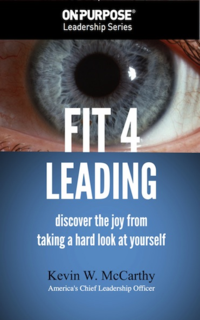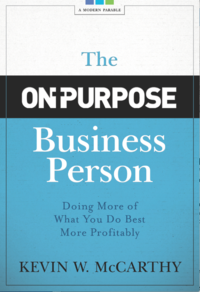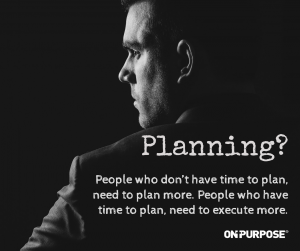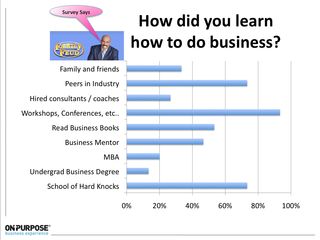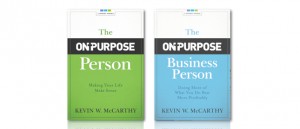We businesspersons tend to be an independent breed.
We take pride in our work ethic, standards for excellence, and accomplishments. This is often what it takes to start a business, to persevere in the challenges, and then thrive.
There’s often (not always) a downside to this self-reliant trait.
This On-Purpose Business Minute invites you to consider the cost of pride especially in light of the subtitle to The On-Purpose Business Person: Do More Of What You Do Best More Profitably.
How do you know if your pride is costing you?
After watching today’s On-Purpose Business Minute, invest 159 more seconds to assess yourself with the following 10 questions:
Here are the 10 questions about pride:
- Do you describe yourself as a helper?
- Are you a low-maintenance friend or employee?
- Are you apt to say, “It’s just as fast to do it myself“?
- Do you believe “If I want something done right, I have to do it myself”?
- Are you one who hates to burden other people with your problems?
- Are you the person most people turn to for advice, wisdom, and counsel?
- Do you find yourself being more and more burned out and then bitter towards others?
- Are you easily frustrated that others can’t do what you do as fast or as well?
- Do you say, “I can’t afford to hire the expertise I need, so I have to learn how to do it myself”?
- Do you say, “I know what I need to do. I just haven’t gotten around to it yet”?
The more questions you answered with a “yes,” the more likely it is that your self-reliance is costing you more than you imagine. You are pushing people away from helping you and shouldering too much of the burden yourself.
Determine your cost of pride.
It could include job loss, slow business growth, long hours, stress, high turnover, ill health, strained relationships, being passed over for a job/raise or a hundred other costs. Do a quick assessment of your cost of pride. You may be stunned.
Share your assessment with a trusted advisor or friend. Invite them to identify what you’ve missed or where you are blind. Ask them for their opinion, be quiet, and avoid being defensive.
The simplest and most comprehensive action to take is to adopt and live into the On-Purpose Approach of Doing More of What You Do Best More Profitably.

